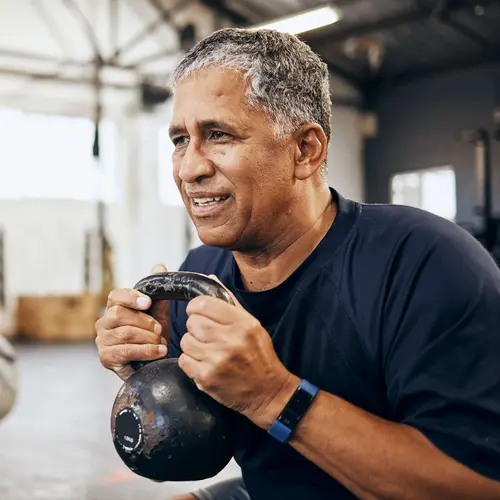Tennis is a fast-paced and dynamic sport. Strength exercises have become an important aspect of tennis training.
Benefits of Strength Training for Tennis Players
Whether you’re a recreational or competitive player, strength training can have many benefits for your tennis game.
Prevent injuries. Strength conditioning can help prevent injuries on the court. Tennis has a lot of repetitive movements, and chronic and acute injuries are common. Common injuries include:
- Tennis elbow
- Bursitis or tendonitis (inflammation) of your elbow, shoulder, wrist
- Osteoarthritis of your knee
- Sprains and strains of various muscles and joints such as ankles, knees, and rotator cuffs
Improve performance. Strength exercises can improve your tennis game.
A 16-week study of young tennis players found that those given extra strength training had significant improvement in performance compared to those who only had regular tennis training. Among the tests used to judge performance were jumping, agility, and sprinting tests, as well as speed of serves.
Faster recovery time. During a tennis game, there’s often bursts of high-intensity activity in between periods of low-intensity activity. This means that your body needs to quickly recover and be ready for the next round during long games. Strength training can help condition your body for faster recovery time.
Strength Exercises for Tennis
Tennis is a sport that needs speed, stamina, strength, and flexibility. Besides drills and training on the court, strength exercises are an important aspect of tennis training.
Core-strengthening exercises. Your core is your body’s foundation. It connects your upper and lower body. It stabilizes your body and helps you balance. Weak core muscles can reduce the performance and power of your arms and legs.
Some core exercises include:
Plank.
- Lie on your stomach and push yourself up off of the floor.
- Support your weight on your elbows, forearms, and toes.
- Don’t let your other body parts touch the floor. If you find this too difficult, you may put your knees on the floor.
- Try to hold this pose for up to 30 seconds. Lower and rest.
Side Plank.
- Lie on one side with your legs extended and feet stacked on top of each other.
- Push your body off of the floor.
- Support your body with your forearm and elbow on the side you're lying on.
- The side of your bottom foot should rest on the floor.
- Hold for 15 to 30 seconds. Lower and rest.
- If this is too difficult, keep the entire side of your leg below the knee on the floor during the exercise.
Superman.
- Lie on your stomach with your arms stretched in front of you and your legs straight.
- Slowly raise one arm and the opposite leg.
- Hold, and then slowly lower your arm and leg.
- Repeat with opposite arm and leg.
Shoulder-strengthening exercises. Your shoulder is your most mobile joint, yet shoulder injuries are among the most common injuries in tennis players. That’s because the tennis serve is a dynamic and unnatural movement. It may overload the different parts of your shoulder.
Some exercises to strengthen your shoulders include:
Pull aparts.
- Stand and hold a rubber tubing resistance band in your hands.
- Keep your arms at or near shoulder level. Your elbows should be straight. Your palms should face each other with your thumbs pointed towards the ceiling.
- Slowly move your arms apart and stretch the resistance band.
- Squeeze your shoulder blades together.
- Return to the starting position.
- Repeat.
“Y’s.”
- Lie down on your stomach with your arms in front of you, elbows straight.
- Your arms should be as close to your ears as possible.
- Raise both arms as high as possible. Your palms should be facing the floor at all times.
- Hold, and then lower your arms slowly to the starting position.
Leg-strengthening exercises. The speed and power needed to move into position to hit the tennis ball may strain your lower body. Some lower body exercises include:
Squats.
- Stand in front of a chair with your feet hip-width apart.
- Begin to “sit” down slowly, but your buttocks should barely touch the chair.
- Hold your chest and head up. Don’t let your knees move forward past your toes.
- Return to standing position.
Lunges.
- Stand with your feet shoulder-width apart.
- Step forward with one foot until your front knee is bent at about 90 degrees.
- Your body weight should be shifted to the front leg. Your back leg helps to stabilize your body.
- Pause, then push yourself back to the starting position using your front leg to generate the force.
Carioca run.
- Start with your feet a little wider than hip-distance apart. Keep your knees soft.
- Run sideways. Your legs should cross each other, one leg in front, then one in the back.
- Hold your arms straight out for balance.
- Twist from your hips as your legs cross.

